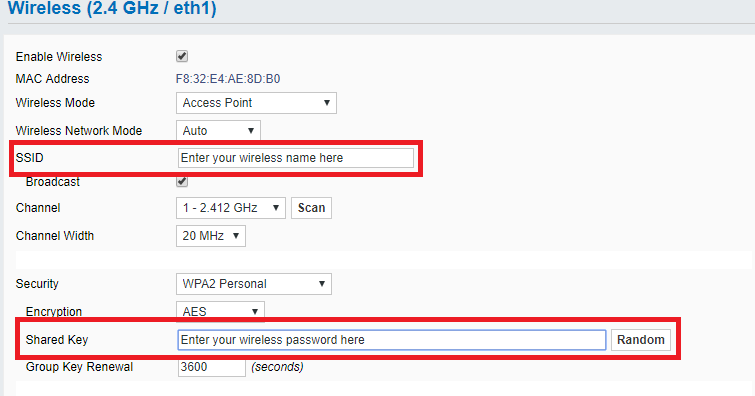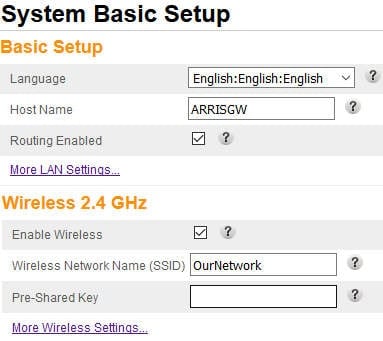
Service Set Identifier (SSID) reviewed by Web Webster
What exactly is an SSID? Should you keep your SSID hidden? Does it carry any security risk? If you’re asking yourself these questions, you’ve come to the right place.
Let’s take a deep dive into your SSID, how to find it and how best to manage it.
SSID definition
SSID is short for service set identifier – another word for a Wi-Fi network name. The purpose of an SSID is to distinguish between different wireless router networks in your proximity. This allows you to identify the one you want and connect to it.
SSIDs can be up to 32 alphanumeric characters long. They are also case-sensitive; “HOME” is a different network than “home.”
Many router manufacturers set up their devices to use a generic name by default (often the make and model of the router). This might look something like ConnectWifi_245.
Functions of an SSID
The whole purpose of an SSID is to enable you to differentiate between different WiFi networks.
For example, if you attempt to connect to the WiFi network at your local cafe, your screen will display a list of different SSIDs. These are the names of all the networks within range of your device. To connect to the cafe’s network, you’ll select the correct one and then enter the password (if necessary).

Image Description: SSID is the name for a Wi-Fi network. Mobile devices will look for all networks in range when you attempt to connect to local Wi-Fi.
How to find your SSID
You might be wondering how to find your own service set identifier. Here’s a quick explainer:
The service set identifier number is typically printed on a sticker located at the bottom or side of your router. The number can also be found in the WiFi modem or router’s owner’s manual.
However, if someone has changed the router’s SSID, this printed information will be outdated and therefore not work. You can find the updated SSID on your operating system—the steps are listed below.
Click on the WiFi icon located on the bottom right corner. A list of available networks (SSIDs) will open.
Find your current network’s name. The network you are connected to will appear at the top of the pop-up window with Connected underneath. This is your SSID.
Click on the WiFi icon located at the upper right corner. This will open a list of available SSIDs.
The network you are connected to will have a colored WiFi icon next to it. This is your SSID.
The network name you are connected to will have a check mark to the left of it. This is your SSID.
What if different networks have the same SSID?
Router manufacturers often give their devices a standard SSID label. This can make it confusing to identify the one your looking for. As a result, many people prefer to change their SSID to something unique and easily distinguished.
If your device encounters two identical SSIDs, and neither is secured by a password, it will automatically connect to whichever one has the stronger signal.
How do I change my SSID?
Changing your SSID is easy, and can be done in your router settings panel. You can access this by typing your router’s IP address (privided by the modem manufacturer) into the address bar at the top of your browser. From there, you can access your router settings, using a generic username and password.
You can then change the network name and password for your network. A unique name makes it straightforward to find your wireless network easily – you can even have some fun with it. Your local bar might rename their network “Gimme a Beer” or “Let’s Get Shakin” – which is a bit better than generic ConnectWifi_245.

Image Description: Change your network name and password in the wireless modem settings.
Should I hide my SSID?
A service set identifier is designed to be displayed. Like an address on a letter, it doesn’t give away any sensitive data in and of itself.
Nonetheless, you can change the settings on your router to turn off your SSID broadcast so that it can’t be seen publicly.
To hide your SSID:
- Login to your router’s admin panel by entering its IP address into your browser.
- Look in the navigation bar for a section titled Wireless or something similar. If there are subsections, go to Wireless Settings, Wireless Options, or Basic Settings.
- On the following menu, you should be able to change your SSID, channel options, and security depending on your router. Look for an option called Enable SSID Broadcast, Hide SSID, Visibility Status, or Enable Hidden Wireless.
- Once you’ve found this option, click the checkbox or toggle option to hide your identifier.
While nobody will be able to see your SSID if you hide it, your network traffic can still be tracked with an 802.11 analysis tool. Doing this also won’t conceal your IP address
How to secure your SSID
Securing your network means making sure nobody else is using your data via your connection.
The best way to do this is by protecting your connection with a unique password – and changing that password regularly. This means you control who can access your connection.
Recommended Reading: Why it’s essential to secure your wireless network
Can SSID be used for cyber attacks?
No matter how secure your own network is, it pays to understand networking risks more generally.
As per the scenario above, your device will automatically connect to whichever WiFi network is in range. But this can leave you vulnerable to a fairly common cyber attack.
A Fake WAP Attack is when a bad actor sets up a fake network containing spyware. By changing the network identifier, the hacker can make the network seem like your normal connection. You, the victim, connect to the network, enabling the hacker to collect your sensitive data.
It is incredibly important to understand which network you’re connecting to. And when a public SSID has no password, your first question should always be “why?”
How to protect yourself from SSID cyber attacks
The best solution to protect yourself against this type of attack is to ensure your device settings do not connect automatically to any network. Furthermore, whenever you are prompted for login data to access a network, think twice before entering the information, and make sure there are no identical SSIDs an attacker may be imitating.
Using multiple SSIDs
Users can assign more than one SSID to an access point. Using multiple SSIDs allows users to access different networks, each with different policies and functions. This increases the flexibility and efficiency of the network infrastructure.
For example, a hotel owner may set up one network for guests and one network for employees. The two networks might use the same physical infrastructure, but they would have two different SSIDs, which would help prevent guests from being able to access sensitive information contained on the hotel servers.




